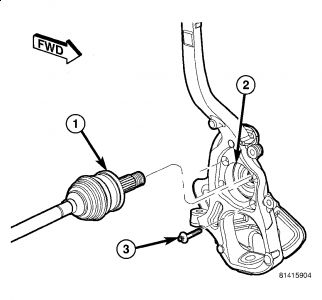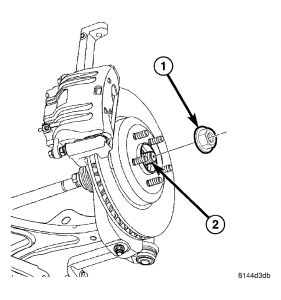Replacing brakes and rotors isn't too big of a job. First, take a look through this link. It shows in general how it's done. You can use it as a guide. Check out the diagrams (Below). Please let us know what happens.
https://www.2carpros.com/articles/how-to-replace-front-brake-pads-and-rotors-fwd
Here are directions specific to your vehicle. The attached pic correlates with the directions.
REMOVAL
NOTE: Before proceeding, Refer to Service Precautions.
1. Raise and support vehicle.
NOTE: Perform steps 2 through 6 on each side of the vehicle.
2. Remove wheel mounting nuts (3), then tire and wheel assembly (1).
NOTE: In some cases, it may be necessary to retract caliper piston in its bore a small amount in order to provide sufficient clearance between shoes and rotor to easily remove caliper from knuckle. This can usually be accomplished before guide pin bolts are removed by grasping rear of caliper and pulling outward working with guide pins, thus retracting piston. Never push on piston directly as it may get damaged.
3. Remove Lower caliper guide pin bolt. To do so, hold the guide pin (3) stationary while turning bolt (1) -
4. Rotate caliper upward (1), exposing brake pads (2 and 5). Use care not to overextend brake hose when doing this or damage may occur.
5. Remove inboard (2) and outboard (5) brake pads from caliper adapter (4).
6. If necessary, remove anti-rattle clips (3) from upper and lower abutments of adapter (4).
CLEANING
WARNING: Dust and dirt accumulating on brake parts during normal use may contain asbestos fibers from production or aftermarket brake linings. Breathing excessive concentrations of asbestos fibers can cause serious bodily harm. Exercise care when servicing brake parts. Do not sand or grind brake lining unless equipment used is designed to contain the dust residue. Do not clean brake parts with compressed air or by dry brushing. Cleaning should be done by dampening the brake components with a fine mist of water, then wiping the brake components clean with a dampened cloth. Dispose of cloth and all residue containing asbestos fibers in an impermeable container with the appropriate label. Follow practices prescribed by the occupational Safety And Health Administration (OSHA) and the Environmental Protection Agency (EPA) for the handling, processing, and disposing of dust or debris that may contain asbestos fibers.
INSPECTION
Visually inspect brake pads for uneven lining wear. Also inspect for excessive lining deterioration. Check the clearance between the tips of the wear indicators (if equipped) on the pads and the brake rotors.
If a visual inspection does not adequately determine the condition of the lining, remove the disc brake pads from the calipers and perform a physical check.
NOTE: It is important to inspect both front and rear brake pads during the same inspection. Typically, front and rear brake pads wear out at the same time.
When servicing, replace both disc brake pads (inboard and outboard) for each caliper. It is necessary to replace the pads on the opposite side of the vehicle as well as the pads failing inspection.
If the brake pads do not require replacement, be sure to reinstall the brake pads in the original position they were removed from.
INSTALLATION
NOTE: Perform steps 1 through 7 on each side of the vehicle.
1. Completely retract caliper piston(s) back into bore(s) of caliper. To do so:
a. Remove fluid reservoir cap.
b. Use hand pressure or a C-clamp may be used to retract piston, first placing a wood block over piston(s) before installing C-clamp to avoid damaging piston(s).
c. Install fluid reservoir cap.
2. If removed, attach anti-rattle clips (3) to upper and lower abutments of adapter (4).
3. Install NEW inboard (2) and outboard (5) brake pads on caliper adapter (4). NEW Inboard and outboard pads are interchangeable.
4. Push caliper guide pins into caliper adapter to clear caliper mounting bosses when installing.
5. Rotate caliper downward, aligning upper mounting boss with lower guide pin.
6. Install Upper caliper guide pin bolt (1). While holding guide pin (3) stationary tighten bolt to 60 Nm (44 ft. lbs.) torque.
7. Install tire and wheel assembly (1). Tighten wheel mounting nuts (3) to 150 Nm (110 ft. lbs.) torque.
8. Lower vehicle.
9. Pump brake pedal several times to set pads to caliper and brake rotor.
10. Check and adjust brake fluid level in reservoir (1).
CAUTION: When NEW brake pads have been installed, keep in mind that braking effectiveness might be somewhat reduced during the first brake applications following installation.
11. Road test vehicle making several stops to wear off any foreign material on brakes and to seat brake shoes.
Check out the diagrams (Below). Please let us know what happens.
Images (Click to make bigger)
Monday, June 28th, 2021 AT 7:40 PM
(Merged)


























































































